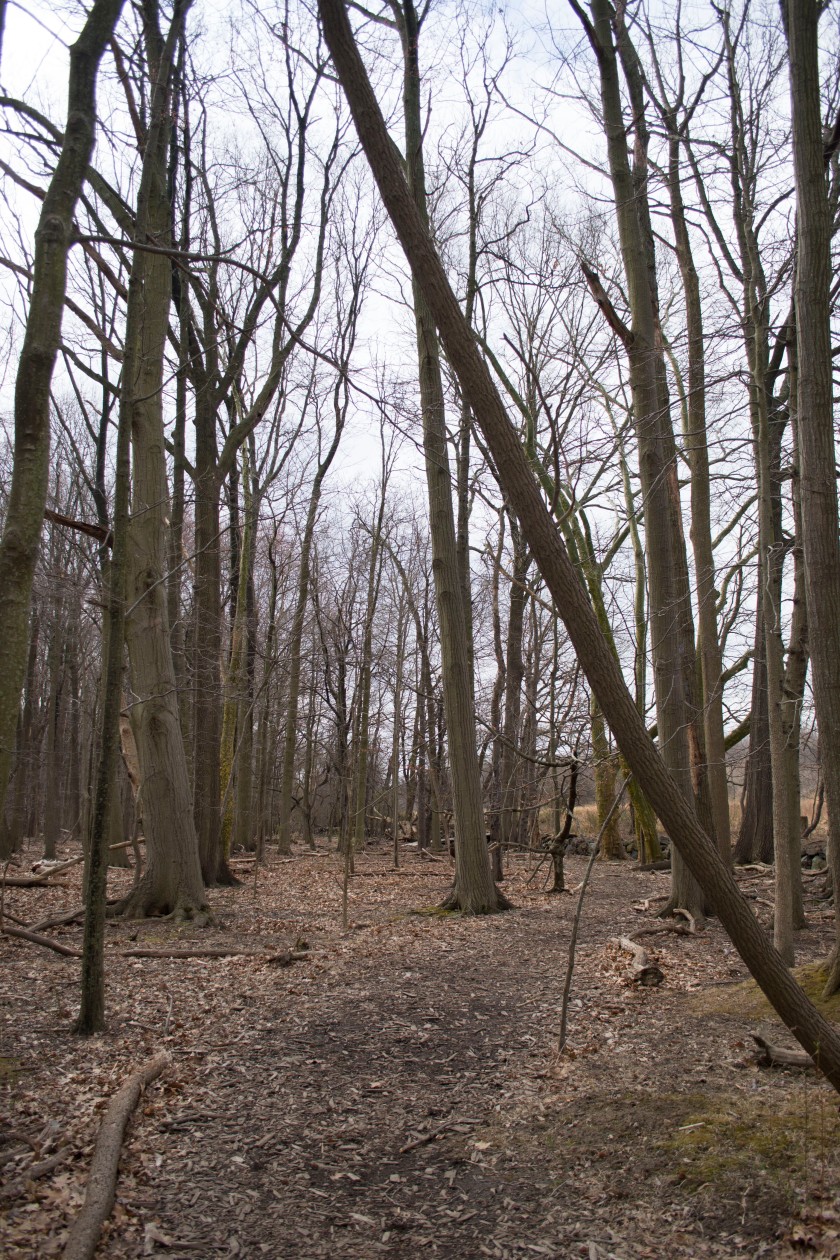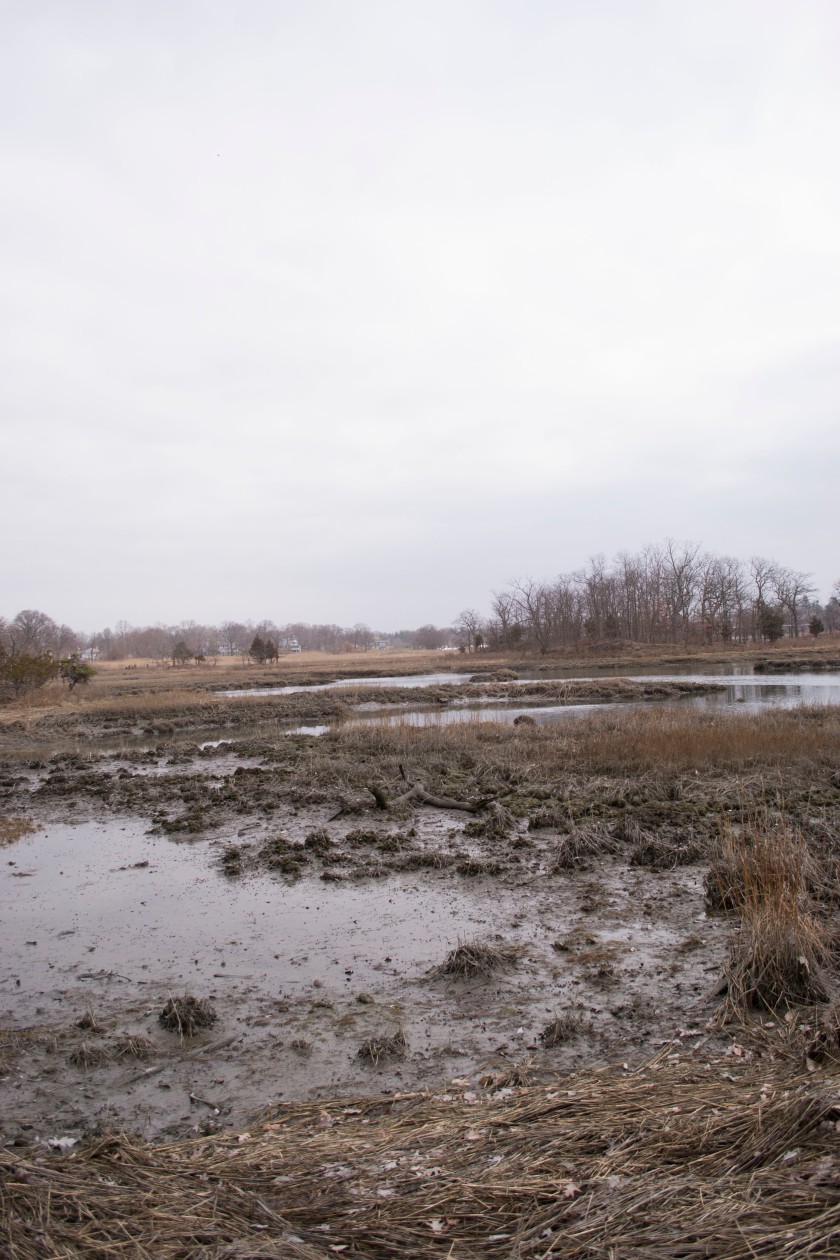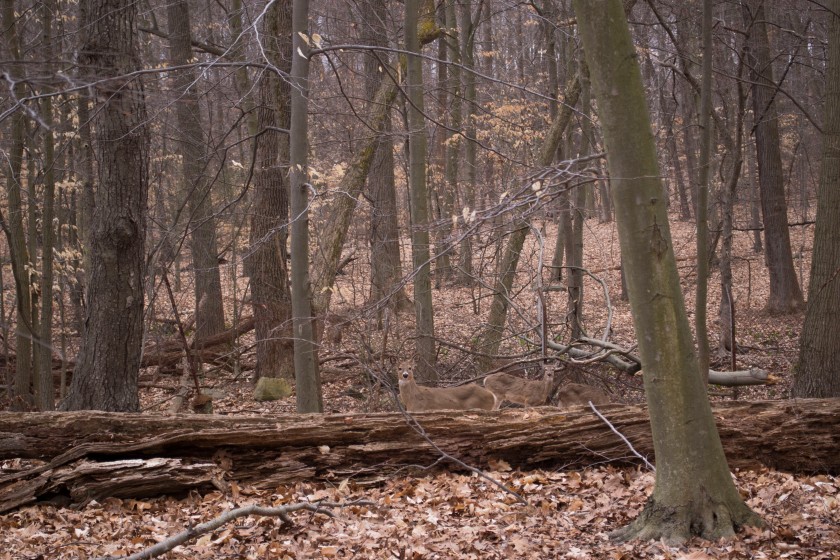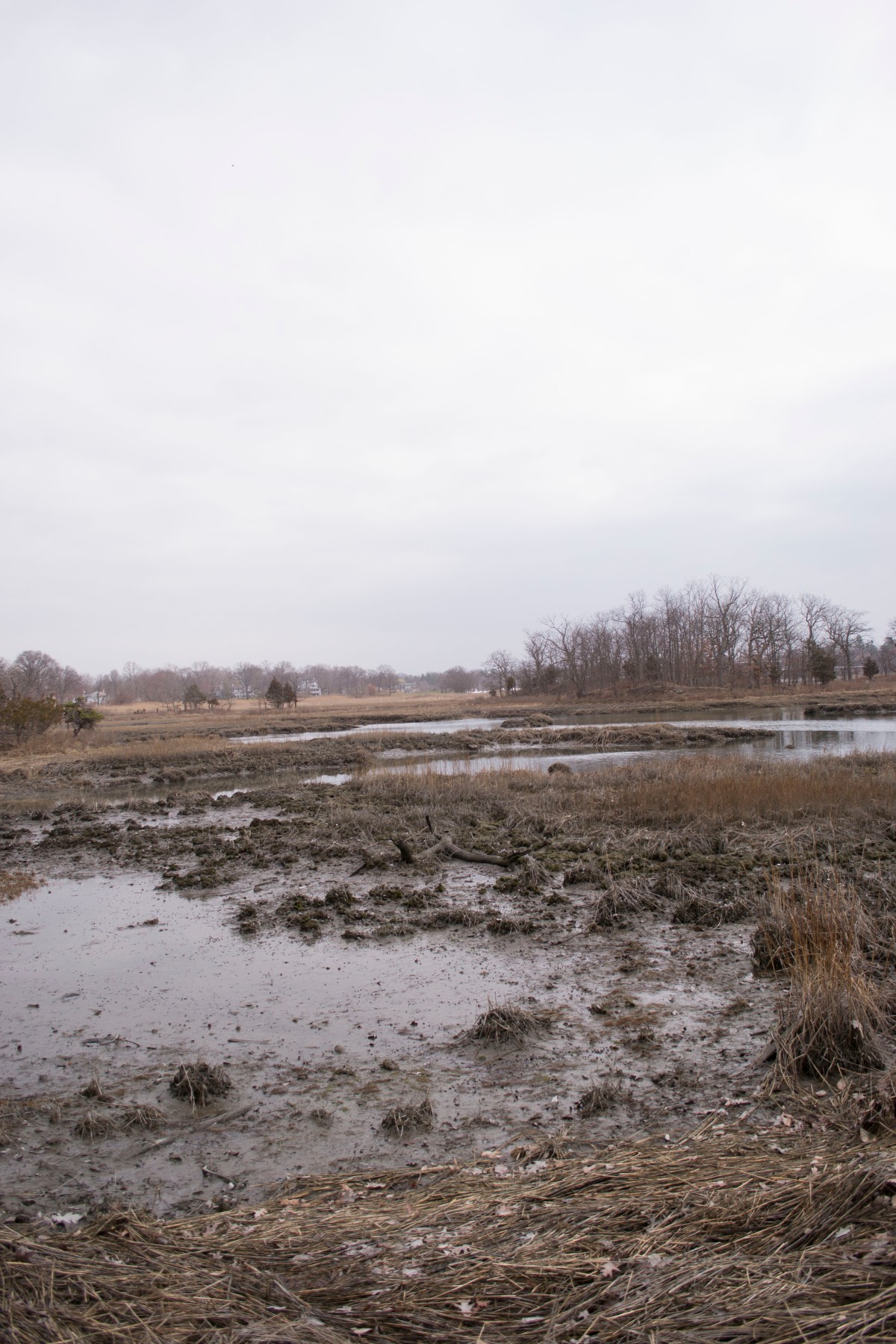Marshlands Conservancy is a beautiful park in Rye, NY, with a shoreline in the Long Island Sound. When I drove into the park, I was the first car there – that quickly changed. The park rapidly filled up. It’s a popular spot, even during weekdays. It has almost 150 acres, three miles of hiking trails, and is great for bird watching.

When I started walking in Marshlands, it was immediately clear that the rangers work to keep the park looking as natural as possible. There are no open green spaces for picnicking or playing in. The closest thing available is an overgrown field, but that is so dissimilar to the open areas I usually see in urban parks, that it hardly counts. Most of the park is heavily wooded, with gigantic trees either standing tall or fallen over. Some of the fallen trees had been cut up so as not to block the trails, but the forest had mostly been left to its own devices.
One of the greatest draws to Marshlands Conservancy is the salt marsh. Though the park has lost over 31% of the marsh and 3% per year, the marshes are still a great place to explore and offer an important environmental service. The salt marsh is able to protect the park from rising sea levels and storm surges. Marshes can soak up water and release it at a pace that will not harm the landscape. For storm surges, marshlands can reduce the height of the surge, thus protecting the surrounding area. Also, the marsh provides a buffer zone for runoff before it enters into the sound.

One great act of conservation that happens in the park starts at the nature center and ends on the shoreline. Outside the center there are plastic bags one can grab and use to pick up trash while you walk around the park. At first I thought this seemed to be superfluous. The park was mostly clear of litter. But, when I walked along the shoreline, I saw quite a bit of trash, which washed in with the tides and is deposited in the park. It is fantastic that the rangers actively encourage visitors to help clean the park.
Along with those trash bags, the conservancy also has many other programs to help preserve the park. Every Saturday there is a volunteer opportunity, whether cleaning the stone walls, looking for nesting osprey, or maintaining hiking trails. On most Sundays, though no conservancy activities are planned, there are events to get people involved in nature. Marshlands Conservancy is a fine example of how certain New York parks should look and act like. I’m not saying all parks should eschew picnic areas and playgrounds, but this natural space will protect New York from rising sea levels and offers a fun area to discover the wilderness.
I had a mixed experience discovering the wild while in Marshlands. Near the back of the park there was a wire fence, which I originally thought was unusual. Once I passed through the open section of the fence, I soon came to understand why it was there. A pack of whitetail deer grazed all throughout the area. I was surrounded by about fifteen of them. They would stare at me for a second or two and then go about their business. It felt magical and I know that an experience like this would not be possible in most other New York parks. But, after a minute of trying to walk past the deer, the experience went from magical to a bit creepy. The deer kept staring at me every time I took a step. Though seeing such a large group of deer was very cool, large groups of deer aren’t always a good thing. They eat a lot of plants and can affect the composition of the forest, which can lower the overall health of the area.

For my next exploration, I go from one salt marsh to another. The park is Jamaica Bay Wildlife Refuge, another area with large animal populations. Though that park also suffers the same tidal trash problems as Marshlands, Hurricane Sandy brought in a whole other set of issues for the refugee.
Helpful Links:
http://events.westchestergov.com/eventsbycategory/11
http://parks.westchestergov.com/marshlands-conservancy
https://www.estuaries.org/pdf/2010conference/monday15/galleon1/session3/hartig.pdf
https://issuu.com/eymund/docs/westchester_marshlands_conservancy_wetland_changes
https://coast.noaa.gov/digitalcoast/wetlands/understand

